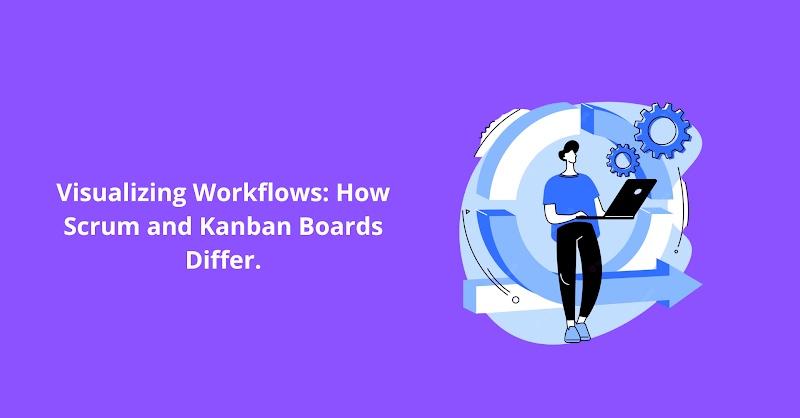Success depends on effective project management techniques. Scrum and Kanban are two well-known methodologies providing distinctive ways to visualise operations and improve team cooperation. Understanding the differences between Scrum and Kanban boards is essential whether you’re a project manager seeking the appropriate match or a Scrum Training expert looking to explore different approaches. In this blog, we’ll explore the fundamental differences between Scrum Board vs Kanban Board and how each board affects the efficiency of project execution.
Scrum Board vs Kanban Board
Both Scrum and Kanban use visual boards to illustrate workflows, tasks, and procedures. These boards act as focal points where teams may monitor progress, spot bottlenecks, and efficiently handle tasks. However, there are substantial differences in how they organise and manage job tasks.
A Scrum board is often divided into “To Do,” “In Progress,” and “Done” columns to indicate the various phases of the development cycle. This board is especially helpful for teams that operate in time-limited iterations known as “sprints.” The team commits to finishing a specific set of predetermined tasks throughout each sprint, which is a concentrated time frame. Planning and monitoring these activities within the constraints of the sprint are made easier by a scrum board. Scrum Certification frequently emphasises the usage of such boards as a basic Scrum framework practice.
Instead of adhering to particular time limitations, a Kanban board concentrates on visualising the work flow as it progresses through different phases. Kanban encourages continuous development by enabling teams to locate potential process improvements. Typically, the columns on a Kanban board show the many phases a job goes through, such as “Backlog,” “Analysis,” “Development,” “Testing,” and “Done.” This strategy aims to minimise bottlenecks and unnecessary job switching while encouraging teams to maintain a continuous flow of work.
Distinguishing Features
- Work-in-progress (WIP) limits are frequently used on Kanban boards to minimise overload and promote efficient productivity. This cap lowers multitasking, promotes greater task attention, and keeps the pace of work consistent. Although explicit WIP limitations are not enforced by scrum boards, the emphasis on finishing work inside the sprint encourages comparable behaviour.
- Sprints, which are set periods that Scrum boards work inside, often last one to four weeks. Teams are motivated to prioritise tasks and work quickly under these time constraints. Kanban boards, on the other hand, provide more flexibility because they don’t call for set deadlines. Because of this, Kanban is a good option for efforts that promote continuous development or projects with erratic workloads.
- Scrum Masters, Product Owners, and Development Teams are just a few of the roles mentioned in the Scrum framework closely related to Scrum boards. To organise and prioritise projects during sprints, these roles work together. When using Kanban boards, the team participates in task management and decision-making.
- Scrum is excellent for projects with clear goals and criteria because it offers a disciplined framework with predictable iterations. On the other hand, Kanban succeeds in dynamic settings where flexibility and responsiveness to change are essential.
Choosing the Right Approach
The decision between Scrum and Kanban boards ultimately comes down to the project’s characteristics, the team’s preferences, and the objectives of the organisation. If you have a Scrum Certification, learning about Kanban might provide you with useful insights into various workflow management techniques. Conversely, the flexible method of Kanban can be more suited if your team thrives in a setting that demands swift adjustment.
Conclusion
Scrum and Kanban boards offer particular approaches for visualising workflows, each of which serves a particular purpose in project management. Project managers and Scrum Certified professionals can gain from an awareness of the distinctions between these boards and how they support effective project execution. The goal is to select the strategy that best fits the dynamics of your team and the needs of the project, whether you want the rigid predictability of Scrum or the adaptable flexibility of Kanban.
